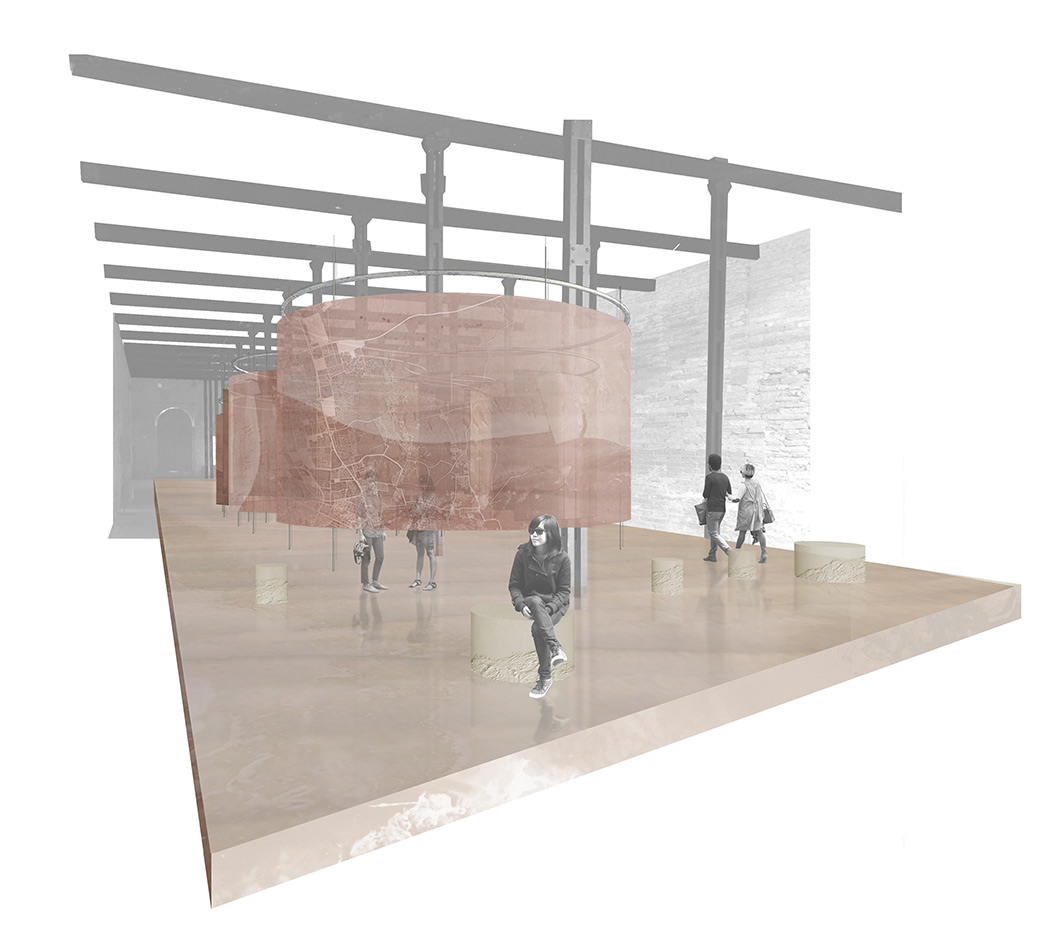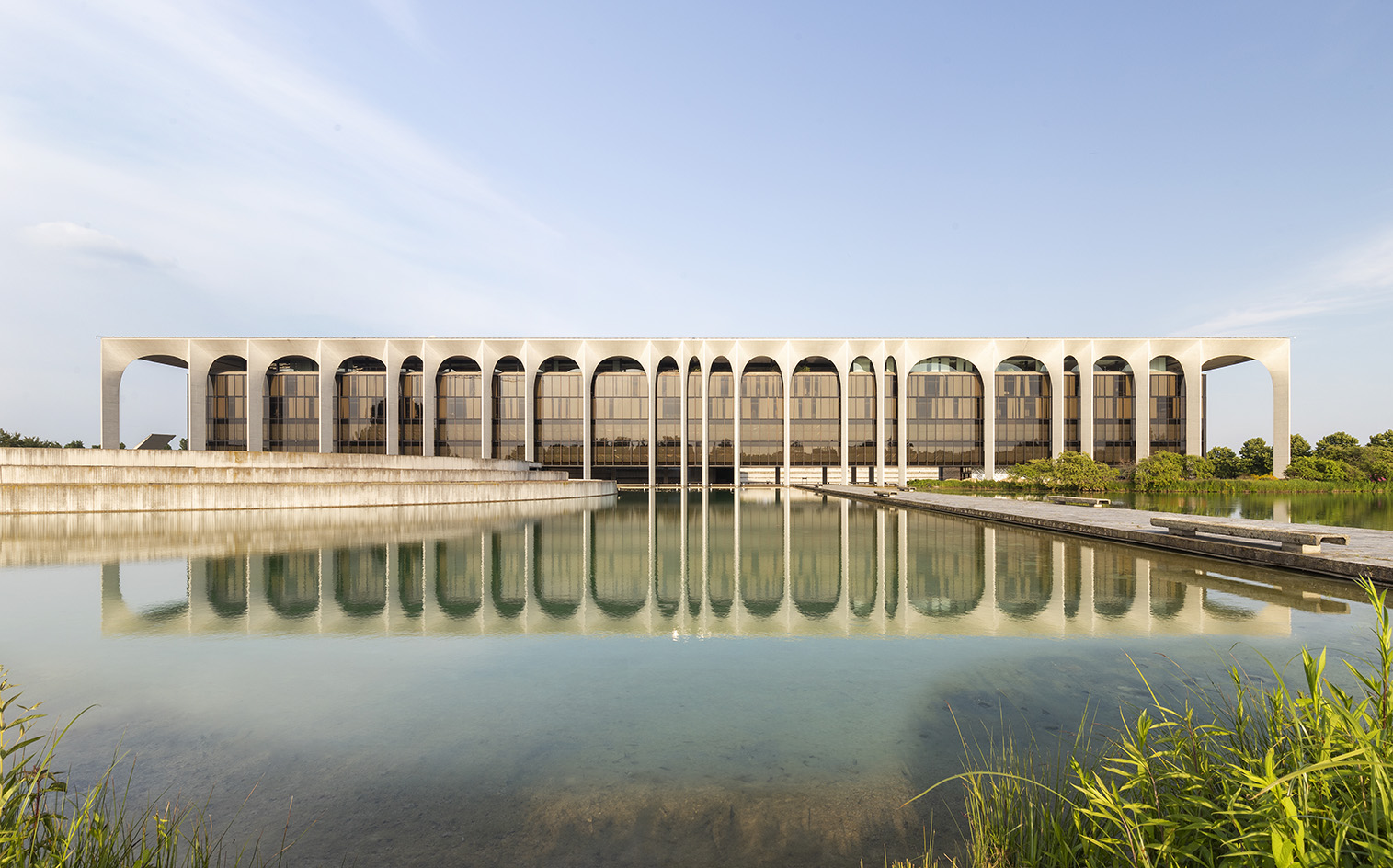Venice Architecture Biennale’s new crop of national pavilions for 2018

Each year Venice expands its pavilion-count as new nations join the fray to discuss their unique urban contexts on the global stage. This year, Venice welcomes Antigua & Barbuda, Saudi Arabia, Guatemala, Lebanon, Pakistan, and Holy See (hosted by the Vatican Chapels) to its crop of pavilions. As ground has been covered in the Giardini, where the longest-standing pavilions reside, the newbies occupy spaces in the Arsenale as well as new spaces of the city – the ever-expanding Biennale continues to grow.
HOLY SEE
Located at the Isola di San Giorgio Maggiore, the Holy See ‘pavilion’ is made up of a series of small temporary pavilions. Curators Francesco Dal Co - critic, architectural historian and editor of Casabella magazine - and Micol Forti commissioned 10 architects to take part and design pavilions including Andrew Berman, Francesco Cellini, Javier Corvalàn, Eva Prats and Ricardo Flores, Norman Foster, Teronobu Fujimori, Sean Godsell, Carla Juacaba, Smiljan Radic, Eduardo Souto de Moura, Francesco Magnani and Traudy Pelzel. The picturesque site of the Holy See pavilions sits alongside the basilica designed by architect Andrea Palladio that dates from 1573. While the pavilions are temporary, they will be dismantled and rebuilt in Italian communities that suffered earthquakes over the last two years.
GUATEMALA
Titled ‘Stigma’, the Guatemalan pavilion responds to the main theme of ‘Freespace’ in creating architectural models that symbolise utopias. The focal point of the exhibition is an exact photographic reproduction of the Temple of Masks in Tikal. Further Guatemalan designs on display include spiral structures decorated with archaic motifs and Spomenik-like monuments that are futuristic totems and silent witnesses of history.

The Holy See pavilion concept for the Venice Architecture Biennale 2018
PAKISTAN
With a population of 197 million people, Pakistan is the sixth-most populous country in the world. For its debut at Venice, the Pakistan Pavilion, titled The Fold and located at the Giardini della Marinaressa – Giardino di Levante, takes the opportunity to examine the theme, Freespace, within the context of Karachi, Pakistan’s largest and most populated city. With coastlines along the Arabian Sea and the Gulf of Oman and shared borders with Afghanistan, India, Iran and China, Pakistan is home to a large number of immigrants, who gravitate to Karachi for employment opportunities, fueling it to grow from one million inhabitants in 1950 into an ethnically and linguistically diverse metropolis of over 20 million today. The city’s growth, and its under regulated and unregulated development patterns have resulted in interesting urban and community consequences, which the pavilion will explore. The team includes Coalesce Design Studio, a Karachi-based multidisciplinary design practice, and Antidote Art & Design, a Dubai-based platform that serves the careers of emerging and mid-career visual artists and designers.

ANTIGUA & BARBUDA
Curated by Barbara Paca and titled ‘Environmental Justice as a Civil Right’, the Antigua & Barbuda pavilion explores ‘environmental justice’ which it argues is a civil right, specifically in the face of severe climate change facing the island nation. The exhibition takes three sites of interest and presents them through architectural models, artefacts, and drawings, examining the relationship between architecture and the environment. This pavilion occupies a fifteenth-century monastery in the heart of Venice.

Saudi Arabia’s concept ‘Brickmatter’ for Venice Architecture Biennale
SAUDI ARABIA
Launching with an exhibition titled ‘Spaces in Between’, the Saudi Arabian pavilion is curated by Jawaher Al-Sudairy and Sumaya Al-Solaiman, and can be found at the Arsenale. The group of architects involved represent a younger generation of architects, all from Saudi Arabia, who were selected from a national competition. This project explores how liminal spaces can be utilised to increase community ties within Saudi’s rapidly expanding cities, which are experiencing rapid urbanisation.
LEBANON
Another new addition to the Arsenale, the Lebanese pavilion explores the ‘preconditions’ for architecture including ‘fragility, scarcity of resources, and commodification’. Curated by Hala Younes, this theme was chosen as at this point in time the country seems to be ‘for sale’ as it gradually becomes absorbed by the real estate economy, where territory becomes no more than abstract ‘unbuilt’ space. Relief maps, landscape photography, and video surveillance are on display to bring attention to the resources instead of the structures.
Visit the Wallpaper* Venice Biennale preview for more unmissable highlights and pavilions

Titled ‘Spaces in Between’, the Saudi Arabian pavilion presents the work of a younger generation of architects all from Saudi Arabia, who were selected from a national competition.
INFORMATION
Receive our daily digest of inspiration, escapism and design stories from around the world direct to your inbox.
For more information visit the website
Harriet Thorpe is a writer, journalist and editor covering architecture, design and culture, with particular interest in sustainability, 20th-century architecture and community. After studying History of Art at the School of Oriental and African Studies (SOAS) and Journalism at City University in London, she developed her interest in architecture working at Wallpaper* magazine and today contributes to Wallpaper*, The World of Interiors and Icon magazine, amongst other titles. She is author of The Sustainable City (2022, Hoxton Mini Press), a book about sustainable architecture in London, and the Modern Cambridge Map (2023, Blue Crow Media), a map of 20th-century architecture in Cambridge, the city where she grew up.
-
 A tale of two Audis: the A5 saloon goes up against the A6 Avant e-tron
A tale of two Audis: the A5 saloon goes up against the A6 Avant e-tronIs the sun setting on Audi’s ICE era, or does the company’s e-tron technology still need to improve?
-
 Inside Christian de Portzamparc’s showstopping House of Dior Beijing: ‘sculptural, structural, alive’
Inside Christian de Portzamparc’s showstopping House of Dior Beijing: ‘sculptural, structural, alive’Daven Wu travels to Beijing to discover Dior’s dramatic new store, a vast temple to fashion that translates haute couture into architectural form
-
 A music player for the mindful, Sleevenote shuns streaming in favour of focused listening
A music player for the mindful, Sleevenote shuns streaming in favour of focused listeningDevised by musician Tom Vek, Sleevenote is a new music player that places artist intent and the lost art of record collecting at the forefront of the experience
-
 Modernist Palazzo Mondadori’s workspace gets a playful Carlo Ratti refresh
Modernist Palazzo Mondadori’s workspace gets a playful Carlo Ratti refreshArchitect Carlo Ratti reimagines the offices in Palazzo Mondadori, the seminal work by Brazilian master Oscar Niemeyer in Milan
-
 Wang Shu and Lu Wenyu to curate the 2027 Venice Architecture Biennale
Wang Shu and Lu Wenyu to curate the 2027 Venice Architecture BiennaleChinese architects Wang Shu and Lu Wenyu have been revealed as the curators of the 2027 Venice Architecture Biennale
-
 At the Holcim Foundation Forum and its Grand Prizes, sustainability is both urgent and hopeful
At the Holcim Foundation Forum and its Grand Prizes, sustainability is both urgent and hopefulThe Holcim Foundation Forum just took place in Venice, culminating in the announcement of the organisation's Grand Prizes, the projects especially honoured among 20 previously announced winning designs
-
 Carlo Ratti reflects on his bold Venice Architecture Biennale as it closes this weekend
Carlo Ratti reflects on his bold Venice Architecture Biennale as it closes this weekendThe Venice Architecture Biennale opens with excitement and fanfare every two years; as the 2025 edition draws to a close, we take stock with its curator Carlo Ratti and ask him, what next?
-
 Step inside Casa Moncler, the brand’s sustainable and highly creative Milanese HQ
Step inside Casa Moncler, the brand’s sustainable and highly creative Milanese HQCasa Moncler opens its doors in a masterfully reimagined Milanese industrial site, blending modern minimalism and heritage, courtesy of ACPV Architects Antonio Citterio Patricia Viel
-
 Aldo Frattini Bivouac is a mountain shelter, but not as you know it
Aldo Frattini Bivouac is a mountain shelter, but not as you know itA new mountain shelter on the northern Italian pre-Alp region of Val Seriana, Aldo Frattini Bivouac is an experimental and aesthetically rich, compact piece of architecture
-
 The 2026 Winter Olympics Village is complete. Take a look inside
The 2026 Winter Olympics Village is complete. Take a look insideAhead of the 2026 Winter Olympics, taking place in Milan in February, the new Olympic Village Plaza is set to be a bustling community hub, designed by Skidmore, Owings & Merrill
-
 Anish Kapoor designs Naples station as a reflection of ‘what it really means to go underground’
Anish Kapoor designs Naples station as a reflection of ‘what it really means to go underground’A new Naples station by artist Anish Kapoor blends art and architecture, while creating an important piece of infrastructure for the southern Italian city